Grigori Guitchounts in Nautilus:
 On a chilly evening last fall, I stared into nothingness out of the floor-to-ceiling windows in my office on the outskirts of Harvard’s campus. As a purplish-red sun set, I sat brooding over my dataset on rat brains. I thought of the cold windowless rooms in downtown Boston, home to Harvard’s high-performance computing center, where computer servers were holding on to a precious 48 terabytes of my data. I have recorded the 13 trillion numbers in this dataset as part of my Ph.D. experiments, asking how the visual parts of the rat brain respond to movement.
On a chilly evening last fall, I stared into nothingness out of the floor-to-ceiling windows in my office on the outskirts of Harvard’s campus. As a purplish-red sun set, I sat brooding over my dataset on rat brains. I thought of the cold windowless rooms in downtown Boston, home to Harvard’s high-performance computing center, where computer servers were holding on to a precious 48 terabytes of my data. I have recorded the 13 trillion numbers in this dataset as part of my Ph.D. experiments, asking how the visual parts of the rat brain respond to movement.
Printed on paper, the dataset would fill 116 billion pages, double-spaced. When I recently finished writing the story of my data, the magnum opus fit on fewer than two dozen printed pages. Performing the experiments turned out to be the easy part. I had spent the last year agonizing over the data, observing and asking questions. The answers left out large chunks that did not pertain to the questions, like a map leaves out irrelevant details of a territory. But, as massive as my dataset sounds, it represents just a tiny chunk of a dataset taken from the whole brain. And the questions it asks—Do neurons in the visual cortex do anything when an animal can’t see? What happens when inputs to the visual cortex from other brain regions are shut off?—are small compared to the ultimate question in neuroscience: How does the brain work?
The nature of the scientific process is such that researchers have to pick small, pointed questions. Scientists are like diners at a restaurant: We’d love to try everything on the menu, but choices have to be made. And so we pick our field, and subfield, read up on the hundreds of previous experiments done on the subject, design and perform our own experiments, and hope the answers advance our understanding. But if we have to ask small questions, then how do we begin to understand the whole? Neuroscientists have made considerable progress toward understanding brain architecture and aspects of brain function. We can identify brain regions that respond to the environment, activate our senses, generate movements and emotions. But we don’t know how different parts of the brain interact with and depend on each other. We don’t understand how their interactions contribute to behavior, perception, or memory. Technology has made it easy for us to gather behemoth datasets, but I’m not sure understanding the brain has kept pace with the size of the datasets.
More here.
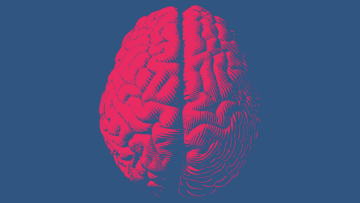 Although I’ve successfully learned the language of mathematics, it has always frustrated me that I couldn’t master those more unpredictable languages like French or Russian that I’d tried to learn in hopes of becoming a spy. Although Gauss too left his love of languages behind to pursue a career in mathematics, he did actually return to the challenge of learning new languages in later life, such as Sanskrit and Russian. At the age of 64, after two years of study, he had mastered Russian well enough to read Pushkin in the original. Inspired by Gauss’s example, I’ve decided to revisit my attempts at learning Russian.
Although I’ve successfully learned the language of mathematics, it has always frustrated me that I couldn’t master those more unpredictable languages like French or Russian that I’d tried to learn in hopes of becoming a spy. Although Gauss too left his love of languages behind to pursue a career in mathematics, he did actually return to the challenge of learning new languages in later life, such as Sanskrit and Russian. At the age of 64, after two years of study, he had mastered Russian well enough to read Pushkin in the original. Inspired by Gauss’s example, I’ve decided to revisit my attempts at learning Russian.
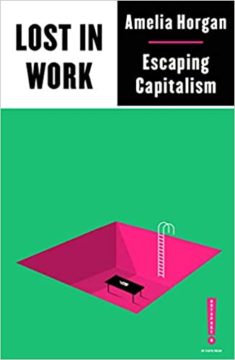 If there is a utopian kernel to be found in this pandemic, so replete with dystopian terror, it is most certainly that each day more and more people have grown to hate the world of work. Some of us, certainly a lucky few, might even enjoy our jobs, or certain aspects of them, but all the same, work under capitalism has become increasingly legible as a system of false promises—deferred freedom, self-actualization, leisure, joy, safety, or whatever else we might value that cannot be reduced to the accumulation of capital.
If there is a utopian kernel to be found in this pandemic, so replete with dystopian terror, it is most certainly that each day more and more people have grown to hate the world of work. Some of us, certainly a lucky few, might even enjoy our jobs, or certain aspects of them, but all the same, work under capitalism has become increasingly legible as a system of false promises—deferred freedom, self-actualization, leisure, joy, safety, or whatever else we might value that cannot be reduced to the accumulation of capital.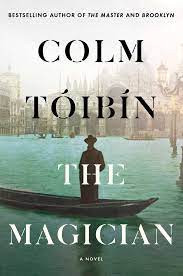 Colm Tóibín presents us with one account of Mann’s gradual progress away from German nationalism. It might not be the last word on what seems to have been a complex and tortured journey, but it functions well in the context of the demands of a novel, where the shifts in perspective must be presented dramatically and are often portrayed through Thomas’s interactions with others, principally members of his large and turbulent family. First and most important of these is his wife, Katia Pringsheim, who is deeply suspicious of his friendship with the nationalist (and later Nazi) writer Ernst Bertram. On the outbreak of the First World War Katia asks her husband to consider how they would feel if their two boys, Klaus and Golo, were old enough to be conscripted, “and we were waiting here each day for news of them”: “And all because of some idea.”
Colm Tóibín presents us with one account of Mann’s gradual progress away from German nationalism. It might not be the last word on what seems to have been a complex and tortured journey, but it functions well in the context of the demands of a novel, where the shifts in perspective must be presented dramatically and are often portrayed through Thomas’s interactions with others, principally members of his large and turbulent family. First and most important of these is his wife, Katia Pringsheim, who is deeply suspicious of his friendship with the nationalist (and later Nazi) writer Ernst Bertram. On the outbreak of the First World War Katia asks her husband to consider how they would feel if their two boys, Klaus and Golo, were old enough to be conscripted, “and we were waiting here each day for news of them”: “And all because of some idea.”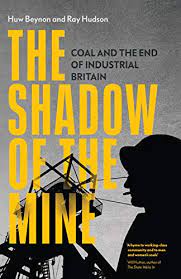 I
I What if
What if  On a chilly evening last fall, I stared into nothingness out of the floor-to-ceiling windows in my office on the outskirts of Harvard’s campus. As a purplish-red sun set, I sat brooding over my dataset on rat brains. I thought of the cold windowless rooms in downtown Boston, home to Harvard’s high-performance computing center, where computer servers were holding on to a precious 48 terabytes of my data. I have recorded the 13 trillion numbers in this dataset as part of my Ph.D. experiments, asking how the visual parts of the rat brain respond to movement.
On a chilly evening last fall, I stared into nothingness out of the floor-to-ceiling windows in my office on the outskirts of Harvard’s campus. As a purplish-red sun set, I sat brooding over my dataset on rat brains. I thought of the cold windowless rooms in downtown Boston, home to Harvard’s high-performance computing center, where computer servers were holding on to a precious 48 terabytes of my data. I have recorded the 13 trillion numbers in this dataset as part of my Ph.D. experiments, asking how the visual parts of the rat brain respond to movement. The story of rising economic inequality is by now so familiar that it fits easily onto a T-shirt. But the way the story is told is often imprecise enough to leave out much of the plot. “We are the 99 percent” sounds righteous enough, but it’s a slogan, not an analysis. It suggests that the whole issue is about “them,” a tiny group of crazy rich people, who are nothing at all like “us.” But that’s not how inequality has ever worked. You can glimpse the outlines of the problem if you take a closer look at the math of inequality.
The story of rising economic inequality is by now so familiar that it fits easily onto a T-shirt. But the way the story is told is often imprecise enough to leave out much of the plot. “We are the 99 percent” sounds righteous enough, but it’s a slogan, not an analysis. It suggests that the whole issue is about “them,” a tiny group of crazy rich people, who are nothing at all like “us.” But that’s not how inequality has ever worked. You can glimpse the outlines of the problem if you take a closer look at the math of inequality. The problems originate in the mundane practices of computer coding. Machine learning reveals patterns in data — such algorithms learn, for example, how to identify common features of “cupness” from processing many, many pictures of cups. The approach is increasingly used by businesses and government agencies; in addition to facial recognition systems, it’s behind Facebook’s news feed and targeting of advertisements, digital assistants such as Siri and Alexa, guidance systems for autonomous vehicles, some
The problems originate in the mundane practices of computer coding. Machine learning reveals patterns in data — such algorithms learn, for example, how to identify common features of “cupness” from processing many, many pictures of cups. The approach is increasingly used by businesses and government agencies; in addition to facial recognition systems, it’s behind Facebook’s news feed and targeting of advertisements, digital assistants such as Siri and Alexa, guidance systems for autonomous vehicles, some  Squid Game is not a subtle show, either in its politics or plot. Capitalism is bloody and mean and relentless; it yells. Each episode moves from one game to the next, in a series that, by the end, combined with some awkward English-language dialogue, feels hopelessly strained. But the show redeems itself with its memorable characters (all archetypal strugglers) and its bright, video-game-inspired design. The art director, Choi Kyoung-sun, said that she wanted to build a “storybook” world—a child’s late-capitalist hell—and she has done so brilliantly.
Squid Game is not a subtle show, either in its politics or plot. Capitalism is bloody and mean and relentless; it yells. Each episode moves from one game to the next, in a series that, by the end, combined with some awkward English-language dialogue, feels hopelessly strained. But the show redeems itself with its memorable characters (all archetypal strugglers) and its bright, video-game-inspired design. The art director, Choi Kyoung-sun, said that she wanted to build a “storybook” world—a child’s late-capitalist hell—and she has done so brilliantly. Countless devices around the world use GPS for wayfinding. It’s possible because atomic clocks, which are known for extremely accurate timekeeping, hold the network of satellites perfectly in sync.
Countless devices around the world use GPS for wayfinding. It’s possible because atomic clocks, which are known for extremely accurate timekeeping, hold the network of satellites perfectly in sync. Liz Harris always seems to be telling us a secret. The catch—and the thing that makes her music as
Liz Harris always seems to be telling us a secret. The catch—and the thing that makes her music as  Now at university in England, Sara looks back on her hometown in southern India. “This is the west,” where almost everything is within reach, but where she comes from, people have always known that “ordinary days can explode without warning, leaving us broken, collecting the scattered pieces of our lives”.
Now at university in England, Sara looks back on her hometown in southern India. “This is the west,” where almost everything is within reach, but where she comes from, people have always known that “ordinary days can explode without warning, leaving us broken, collecting the scattered pieces of our lives”.  The dragon resting on its golden hoard. The gallant knight charging to rescue the maiden from the scaly beast. These are images long associated with the European Middle Ages, yet most (all) medieval people went their whole lives without meeting even a single winged, fire-breathing behemoth. Dragons and other monsters, nights dark and full of terror, lurked largely in the domain of stories—tales, filtered through the intervening centuries and our own interests, that remain with us today.
The dragon resting on its golden hoard. The gallant knight charging to rescue the maiden from the scaly beast. These are images long associated with the European Middle Ages, yet most (all) medieval people went their whole lives without meeting even a single winged, fire-breathing behemoth. Dragons and other monsters, nights dark and full of terror, lurked largely in the domain of stories—tales, filtered through the intervening centuries and our own interests, that remain with us today.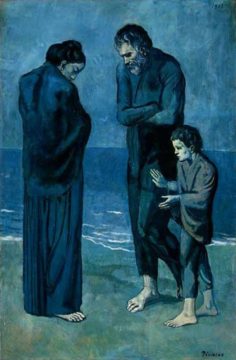 A man is standing on the parapet of a bridge. He is about to jump. What should you do? Most people would agree that the moral act would be to talk to him to try to persuade him not to. Most people would also agree that giving him a push because “that’s what he wanted” would be committing murder.
A man is standing on the parapet of a bridge. He is about to jump. What should you do? Most people would agree that the moral act would be to talk to him to try to persuade him not to. Most people would also agree that giving him a push because “that’s what he wanted” would be committing murder.